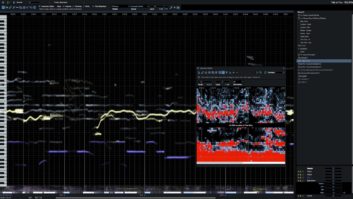
Setting a Standard
I wanted to comment on the October 2008 issue. Mix always manages to bring a balanced and larger perspective on the recording industry than any other publication I read. The interview with T Bone Burnett piqued my interest, partly because this is the third article I have read in as many weeks, but chiefly because of his promotion of his new “CODE” innovation. While I appreciate Burnett’s desire to return (or introduce) fidelity to the average consumer’s listening experience, I am somewhat mystified by his expectations for this development. I agree that there is no real delivery standard for audio, and it seems unlikely that the industry will adopt a new standard that was not the result of an industry-wide consortium, despite the credentials of its developer.
THX is an example of a process that would not have been adopted if it had not been for the combined muscle of the developers and distributors behind it. I also have doubts about the validity of any process meant to standardize something that is so inherently subjective. There are so many variables in any audio process that uniform delivery will always be compromised by factors that cannot be controlled. One can understand the desire to ensure that what you create is delivered in the closest approximation possible, but it seems more likely that the best case for uniform delivery is at the lowest possible standard rather than the highest. THX is (to me) a fine example of this: It is a standard; it is fairly uniform and sounds completely unnatural.
Burnett is talented; he makes amazing recordings, and maybe he can pull this off. But given the history of the industry and consumers gravitating to the lowest standard rather than the highest, I wish him luck.
Todd Zimmerman
Studio 139
Old Gear, New Tricks
I like reading Eddie Ciletti’s “Tech’s Files” and picking up little insights. In his July 2008 column [“Eureka Moments: Unlocking a Vintage Console’s Long-Hidden Secret,” about restoring a 1970s-era Raindirk portable recording desk], he discussed removing a buffer transistor from one of the channel op amps when upgrading the amp and replacing it with a “piece of copper wire.” Did Eddie consider putting a low-value resistor (about 22 ohms) there instead? I’m assuming the buffer transistor was inside the op amp’s feedback loop. Putting an output resistor inside the feedback loop is an old trick for increasing op amp stability when driving large capacitive loads, and it might help with his oscillation problem.
Even having the resistor outside the loop will help if the trade-offs are acceptable. (As the newer op amp has better output drive, taking a little away due to the resistor may be a good trade-off.) On its Website, Analog Devices offers a great explanation of this and other techniques, along with an interactive spreadsheet.
Marc Lindahl
Bowery Engineering
Eddie Ciletti replies: Marc, thanks for writing. I think I got lucky in that there was — and still is — a 100-ohm resistor between the op amp and the (former) base of the transistor. In the figure (upper-right), red represents the removed transistor; the green jumper around the transistor was added with the 100-ohm resistor still within the loop. There is also a load resistor (not shown).
I don’t recall which part of the circuit is interrupted by wiring to/from the insert points, but no outboard gear was connected and no one schematic accurately represents this model. The “upgrade” from the original op amp to a 5532 obviously revealed some shortcomings — whether in power/ground distribution or circuit board layout. My acid test was to boost treble and preamp gain to lure the beast into a trap, and the tweaks I made seemed to tame it.
Breaking In
Mix readers tell us how they got into the business:
I did some recording in Nashville in the late ’70s and early ’80s, and wrote a tune that made it to the radio in 1978. That’s when I got the bug to be on the other side of the glass.
I was born with an eye condition called progressive degenerative retinitis. My retinas are falling apart — therefore, I am slowly losing my eyesight. When the condition took a radical turn for the worse in 2002, Missouri’s Rehabilitation Services for the Blind enrolled me in Berklee’s Master Certificate in Music Production and Technology program. I am almost finished with the program and have learned more than I ever thought I could retain.
In a few short years, I’ve moved from a two-room, 440-square-foot studio into a purpose-built 1,600-squre-foot Pro Tools HD3 studio here in St. Louis. Four people work with me now. We also started a publishing company and a record label. I’ve been able to create a business that I love and never want to leave — even if it means 60 to 80-hour weeks and some 36-straight-hour sessions. It makes me feel alive!
Larry E. Cowsert
12 Bar Productions
Mix‘s January issue will focus on live sound. We’d like to hear from live engineers — tell us about your wildest gig. E-mail us at [email protected].






